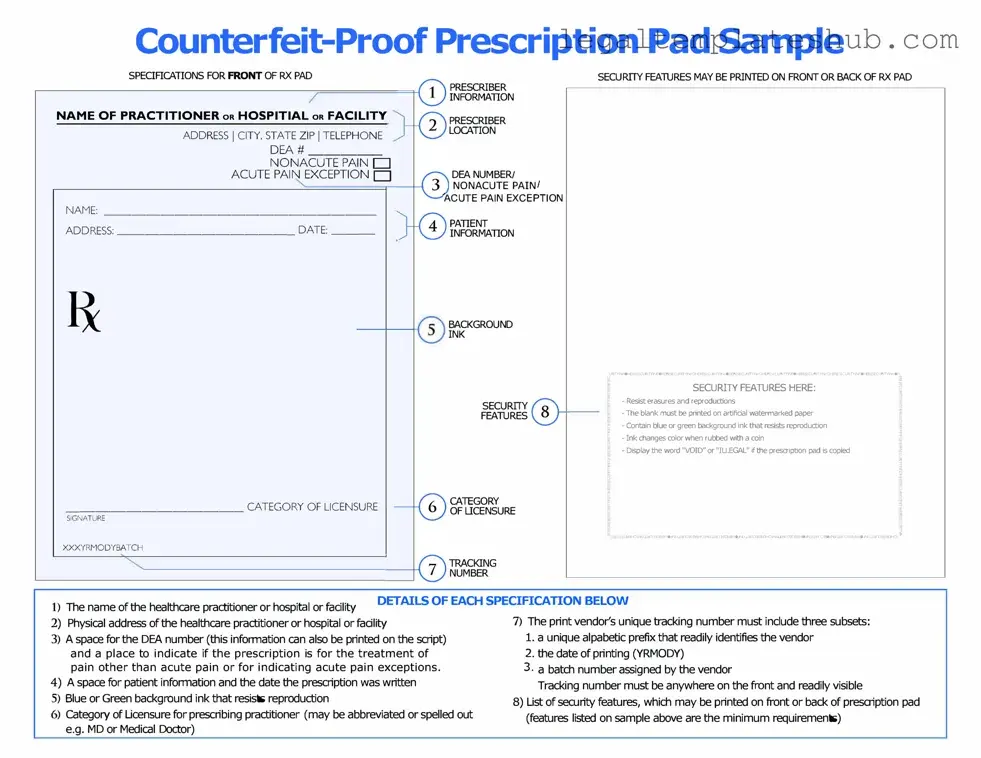Instructions on Filling in Prescription Pad
Filling out the Prescription Pad form accurately is essential to ensure that patients receive the correct medications. Once you have completed the form, it will be ready for submission to the pharmacy. Follow these steps to fill it out properly.
- Start with the Patient Information: Write the patient's full name, date of birth, and contact information at the top of the form.
- Enter the Date: Fill in the date when the prescription is being written.
- Specify the Medication: Clearly write the name of the medication, including the dosage and form (e.g., tablet, liquid).
- Indicate the Quantity: Specify how many units of the medication the patient should receive.
- Provide Usage Instructions: Write clear instructions on how the patient should take the medication, including frequency and duration.
- Sign the Prescription: The prescribing provider must sign the form to validate the prescription.
- Include Additional Information: If necessary, add any special instructions or notes for the pharmacist.
After completing these steps, double-check the information for accuracy. This will help prevent any issues at the pharmacy and ensure that the patient receives their medication without delay.
